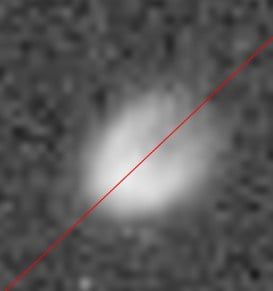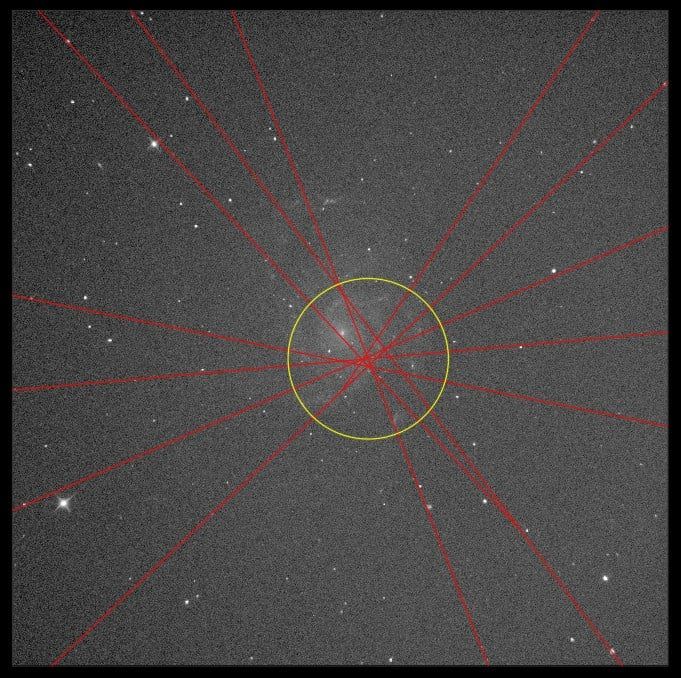What I do is collimate the scope and then put the imaging train back in and capture an image of a star field.
Then I take that image and put into a CAD programme to draw lines along the vectors dictated by the comatic stars, I do this for about 5-10 stars, enough to give me an idea of where they are all pointing to. I.e the centre of the field where there is zero coma (the sweet spot).
Note I don’t use a coma corrector. If a coma corrector was used in the imaging train it would need to be removed for this test to work.
I also overlay a circle depicting the diffraction limited zone, to scale on the image. I place this circle with its centre on the point of converging lines (or best fit of).
This all takes me about 5 mins in CAD. If the circle is well away from centre of the sensor I redo collimation, if not then I leave it.
Example images below.
Id like to somehow automate the process of drawing the lines and the centering of the circle overlay, so I could adjust the primary collimation to get the circle in the centre of the chip in real time, with the feed from the camera refreshing the image after each adjustment, and the app redrawing the lines/circle after each new image.
Does anyone know how difficult an app like this would be be? I’m considering paying someone to make it but have literally no idea how much it would cost.
I appreciate not everyone would want to remove their coma corrector to do this so its usefulness to others is limited.


Thanks!


